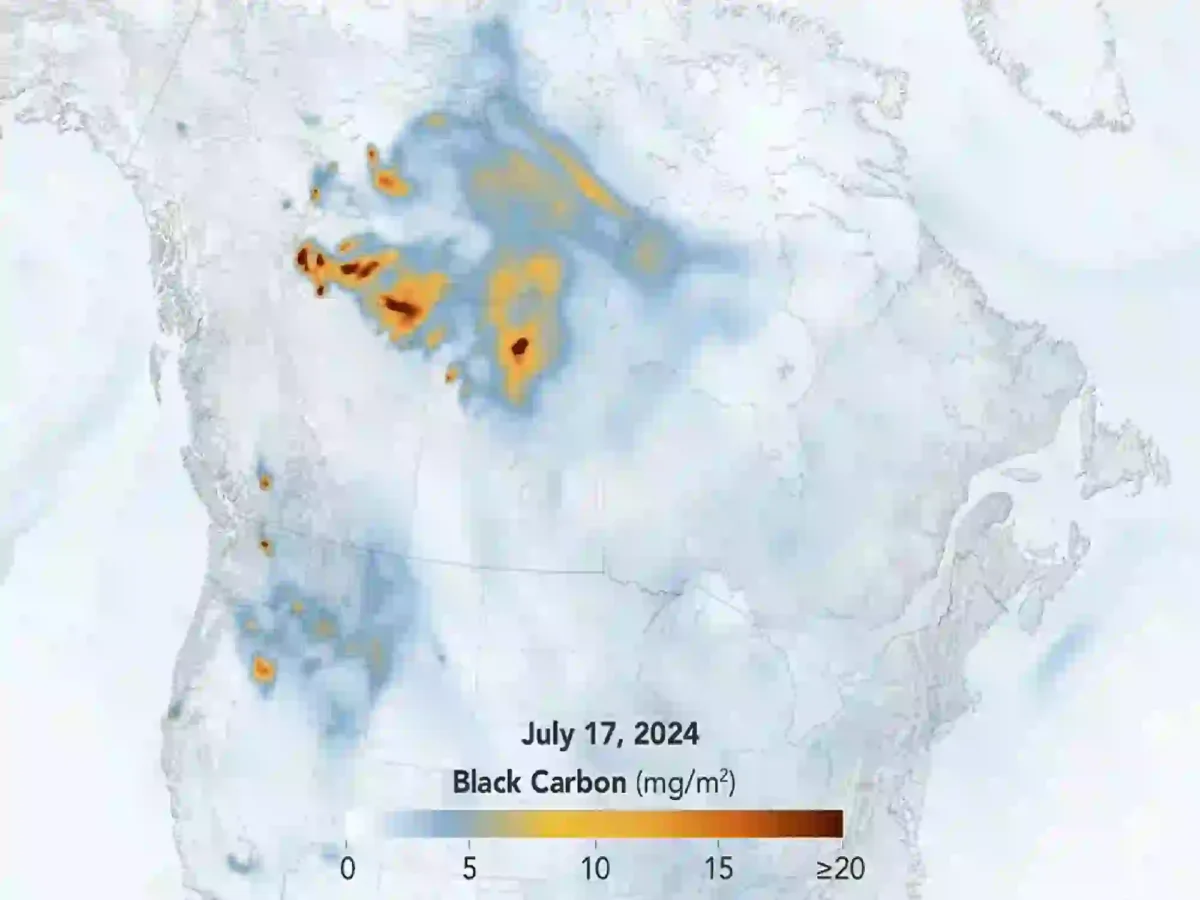Recent forest fires in western Canada have resulted in vast clouds of smoke drifting across North America, a phenomenon documented in satellite imagery, aircraft photos, and observations from ground-level monitoring stations captured by NASA.
NASA released an animation on Friday
NASA released an animation on Friday displaying the extent of smoke coverage over British Columbia, Alberta, Saskatchewan, Manitoba, and the Northwest Territories in Canada. This smoke haze has also crossed into the U.S., affecting states such as Montana, Colorado, Kansas, Wisconsin, and various regions in the Midwest.
The animation is based on data from NASA and illustrates the spread and density of black carbon— a form of aerosol pollution emitted from forest fires—across North America from July 17 through July 24.
Canada was battling 948 active wildfires, with 387 of them classified as uncontrollable
As of Friday afternoon, Canada was battling 948 active wildfires, with 387 of them classified as uncontrollable, according to the Canadian Interagency Forest Fire Centre. A particularly rapid fire drastically damaged Jasper, a well-loved alpine destination in Alberta, prompting an evacuation of about 25,000 residents.
Similarly, significant fires in the Pacific Northwest and California have deteriorated air quality nearby. In the last week, air quality alerts and advisories were announced in states including Washington, Oregon, Idaho, Colorado, and Wyoming. Reports of smoky conditions have come from as far as North Dakota, South Dakota, and the High Plains.
Largest ongoing fire in the U.S. is in Oregon
The largest ongoing fire in the U.S. is in Oregon, aggravated by lightning, heat, and strong winds. Altogether, an area close to 1 million acres has been affected by over 35 uncontained wildfires in Oregon alone.
In Idaho, the entire population of Juliaetta was forced to evacuate on Thursday due to the rapid spread of the Gwen Fire among others in the vicinity.
List of poorest air quality cities in the U.S
On Friday, cities in Oregon, Montana, California, and Idaho were listed as having the poorest air quality in the U.S., per IQAir, a Swiss air quality measurement firm. For example, Burns, Oregon’s air was rated as “hazardous”, while Stevensville, Montana experienced “very unhealthy” air quality levels.
In California, the Park Fire has scorched over 250 square miles around Chico since it began on Wednesday, with no containment achieved by Friday morning.
Dangerous Diseases caused by Wildfires
Firefighters are also tackling the Gold Complex fires in the Plumas National Forest in California, ignited by lightning and covering more than 5 square miles since July 22. With only 11% containment and high winds propelling the fires, efforts to control them continue.
The smoke from these wildfires, reaching as far east as New England and south to Mexico, poses various health risks.
Wildfires release not just black carbon but also carbon dioxide, carbon monoxide, various chemicals, and fine particulate matter into the air. These pollutants can lead to irritation of the eyes, nose, throat, and lungs, and worsen chronic conditions such as diabetes, heart disease, COPD, and chronic kidney disease.
Risk for vulnerable groups from wildfire smoke exposure
Vulnerable groups, including young children, the elderly, pregnant women, and individuals with asthma or other pre-existing respiratory issues, are particularly at risk from wildfire smoke exposure.
In both Canada and the western U.S., thunderstorms have initiated many of these wildfires. Subsequent gusty winds, hot conditions, and additional thunderstorms have exacerbated the situation.
Summer wildfires are a known occurrence in western Canada and the U.S.
Though summer wildfires are a known occurrence in western Canada and the U.S., research indicates that climate change is heightening the likelihood of these events by fostering conditions more conducive to fire ignition and spread. Increasing temperatures also contribute to the drying of vegetation, making it more susceptible to catching fire.

